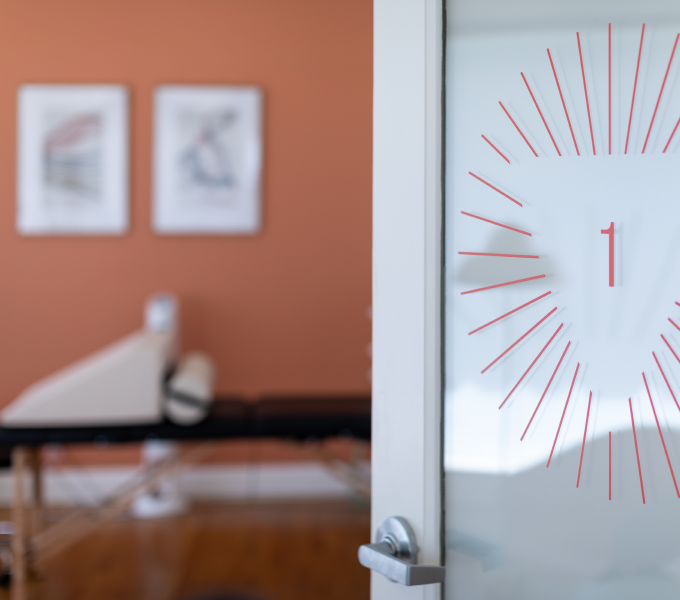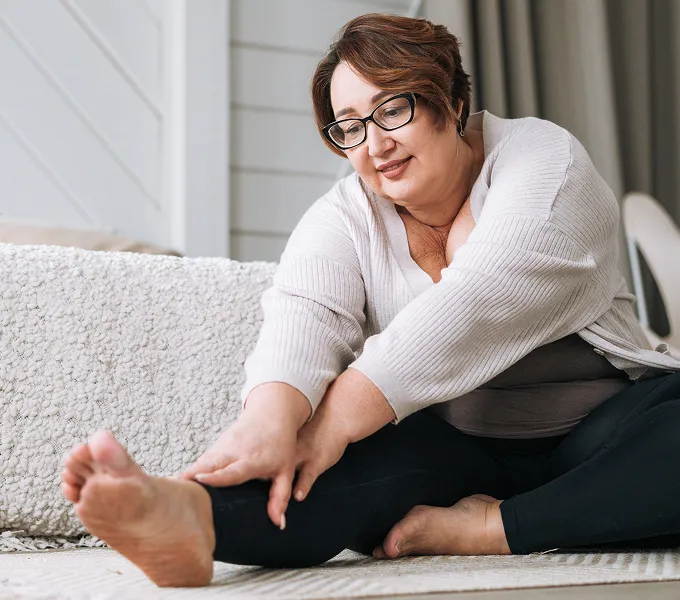
Do You Have to Do Pelvic Floor Exercises Forever? Yes, But Not How You Might Think
For as popular as pelvic floor health has become, Kegels sure don’t feel glamorous…day in…day out… They’re repetitive, easy to forget, and usually fall to the bottom of your to-do list when you’re balancing work, family, and life.
So if you’ve finished pelvic floor physical therapy (PFPT) and are wondering whether you have to keep up the exercises forever, you’re not alone.
The short answer is that your pelvic floor, like any other muscle group, stays healthier when you keep exercising it. But that doesn’t mean you’re stuck doing Kegels every day, for life. When you understand how these muscles work, what affects them over time, and how to keep them strong in ways that fit your lifestyle, it’s a whole lot easier to protect your pelvic health without burnout.
Why does your pelvic floor need consistent care, but not constant effort?
Your pelvic floor is a layered group of very important muscles and connective tissues that form a supportive “hammock” at the bottom of your pelvis. These muscles:
- Support your bladder, uterus, and bowels
- Help control your bowel and bladder movements
- Play a role in sexual and reproductive function
- Work with your diaphragm and deep core muscles to stabilize your hips, back, and posture
When your pelvic floor is strong and coordinated, it can support everyday movement, bowel and bladder control, and comfort. When it’s weak or overactive, it can cause a bunch of pelvic floor dysfunction symptoms, including leakage, heaviness, or pain.
Pelvic floor muscle training (PFMT) helps restore strength, flexibility, coordination, or any combination of these things. And research shows that consistent PFMT can improve pelvic floor symptoms, especially after childbirth or during menopause.
Once you’ve built strength, you can usually keep your results with less frequent training, much like any other muscle group:
- Folks who are younger may be able to maintain strength with one focused session per week.
- Older adults, like those in menopause, may need more consistent work, with two short sessions weekly to keep their muscles strong.
And “pelvic floor exercise” doesn’t just mean Kegels. Activities that emphasize deep core control, breathing, and movement can also keep your pelvic floor healthy. So, activities like yoga, Pilates, or stabilization exercises can also keep your pelvic floor strong. Even improving posture, hip and leg strength, and how you use your pelvic floor muscles during daily tasks can reduce strain and support long-term pelvic floor muscle health.
So, while your pelvic floor needs consistent care, it doesn't mean constant kegels.
Why does continued care matter?
For folks assigned female at birth, major life changes can impact how your pelvic floor works:
- Surgery (like a hysterectomy or gender-affirming surgery) can injure pelvic floor tissues, lead to scar tissue, and change how pelvic tissues support your organs.
- Hormonal shifts (like can happen during pregnancy, certain cancer treatments, menopause, or while breastfeeding) can affect muscle tone, blood flow, and tissue elasticity.
- Pregnancy and childbirth can stretch and load your pelvic floor in ways that need rehabilitation afterward.
So revisiting PFMT, or sticking with a lighter but consistent routine, during these transitions can really help you keep your pelvic floor muscle support, circulation, and function.
If you’re considering or going through surgery, you can read more about recovery in our related guides:
- Hysterectomy recovery
- Prolapse repair recovery
- Gender-affirming surgery recovery
- Fibroid surgery recovery
- Hip surgery recovery
Why do people stop PFMT and how can I make it sustainable?
Research shows most people stop their pelvic floor routine for three main reasons:
- Life gets in the way
- They don’t get enough education or instruction
- There’s a disconnect about long-term consequences
Understanding these barriers makes it easier for you to create a plan that lasts.
Life gets in the way
Between postpartum recovery, hormonal changes, or returning to work, consistency can be tough. But PFMT doesn’t have to be all-or-nothing. One study found that women who practiced PFMT once a week were able to keep their strength and incontinence improvements even 5 years after pelvic floor therapy.
It may help to mentally link your exercises to daily cues, like brushing your teeth or during a regular workout. Some folks find that specific pelvic health mobile apps can help them remember.
They don’t get enough education or instruction
Too many people are told to “just do Kegels” without really understanding how, or if it’s even right for them. In reality, pelvic floor training is highly individualized. For some, the problem is weakness. For others it’s tightness or poor coordination.
PFMT can include:
- Targeted contractions and relaxations (traditional Kegels)
- Stabilization exercises for the abdominals and hips
- Lifestyle adjustments like changes in diet, bathroom habits, or bowel mechanics
- Breathing and relaxation training
- Mechanics and postural adjustments to reduce strain during movement
A pelvic floor physical therapist can assess your unique muscle patterns and teach your safe, effective engagement strategies for your body and life stage.
The disconnect about long-term consequences
Once symptoms improve, it’s super tempting to stop. But, as with any muscle group (including your heart) your pelvic floor strength fades when you ignore it. And because your pelvic floor changes as your body changes, it’s important to keep checking on your pelvic floor health in the long term.
Even short bouts of regular movement or awareness practice can keep you from regressing and reduce your risk of leakage or prolapse returning.
So… Do you really have to do pelvic floor exercises forever?
Not exactly. You probably won't have to do kegels every day forever. But your pelvic floor does need attention forever.
A more realistic pelvic floor plan usually includes three phases:
- Rebuilding (early recovery): At first, you’ll likely need daily guided exercises with a PFPT to restore coordination and control. Some of these exercises may include kegels.
- Transition (after initial recovery): Once you are starting to improve, and have a better hang of your pelvic floor muscle function, you can usually reduce how much you exercise (to maybe 1–3 times a week), with a focus on maintaining strength and quality of movement.
- Maintenance (long term): In the long term, you can integrate pelvic awareness into your daily activities (like during lifting, exercise, or with every trip to the bathroom) and schedule check-ins with your clinician when you need it.
And if your progress stalls, or your symptoms return, a short refresher with a pelvic floor therapist can help.
The goal is lifelong awareness and adaptability because your pelvic floor changes as your body changes.
For help building a pelvic floor plan that actually fits your life, schedule a visit with a pelvic floor physical therapist at Origin. They’ll give you personalized support that you need to make you want to do your pelvic floor exercises forever!
References:
Bø, K., and T. Talseth. “Long-Term Effect of Pelvic Floor Muscle Exercise 5 Years after Cessation of Organized Training.” Obstetrics & Gynecology, vol. 87, no. 2, Feb. 1996, pp. 261–265. doi:10.1016/0029-7844(95)60375-1.
Cho, S. T., and K. H. Kim. “Pelvic Floor Muscle Exercise and Training for Coping with Urinary Incontinence.” Journal of Exercise Rehabilitation, vol. 17, no. 6, 27 Dec. 2021, pp. 379–387. PubMed Central, doi:10.12965/jer.2142666.333.
Dimli, B. O., E. K. Mutlu, D. S. Altac, and H. Taskiran. “Comparison of the Effects of Pelvic Floor Muscle Training and Modified Pilates Exercises in Elderly Women with Stress Urinary Incontinence: A Randomized Clinical Trial.” European Journal of Obstetrics & Gynecology and Reproductive Biology, vol. 300, Sept. 2024, pp. 327–336. doi:10.1016/j.ejogrb.2024.07.033.
Harper, R. C., S. Sheppard, C. Stewart, and C. J. Clark. “Exploring Adherence to Pelvic Floor Muscle Training in Women Using Mobile Apps: Scoping Review.” JMIR mHealth and uHealth, vol. 11, 2023, e45947. doi:10.2196/45947. PubMed Central.
Kannan, P., W. H. Hsu, W. T. Suen, L. M. Chan, A. Assor, and C. M. Ho. “Yoga and Pilates Compared to Pelvic Floor Muscle Training for Urinary Incontinence in Elderly Women: A Randomised Controlled Pilot Trial.” Complementary Therapies in Clinical Practice, vol. 46, Feb. 2022, 101502. doi:10.1016/j.ctcp.2021.101502.
Marcellou, E. G., S. Stasi, V. Giannopapas, K. Bø, D. Bakalidou, M. Konstadoulakis, and G. Papathanasiou. “Effect of Pelvic Floor Muscle Training on Urinary Incontinence Symptoms in Postmenopausal Women: A Systematic Review and Meta-Analysis.” European Journal of Obstetrics & Gynecology and Reproductive Biology, vol. 304, Jan. 2025, pp. 134–140. doi:10.1016/j.ejogrb.2024.11.040.
Spiering, B. A., I. Mujika, M. A. Sharp, and S. A. Foulis. “Maintaining Physical Performance: The Minimal Dose of Exercise Needed to Preserve Endurance and Strength Over Time.” Journal of Strength and Conditioning Research, vol. 35, no. 5, May 2021, pp. 1449–1458. doi:10.1519/JSC.0000000000003964.
Tsartsapakis, I., I. Bagioka, F. Fountoukidou, and E. Kellis. “A Comparison between Core Stability Exercises and Muscle Thickness Using Two Different Activation Maneuvers.” Journal of Functional Morphology and Kinesiology, vol. 9, no. 2, 11 Apr. 2024, p. 70. doi:10.3390/jfmk9020070. PubMed Central.
Wang, Y., Y. Zhuo, H. Yan, et al. “How Important Is the Timing and Duration of Pelvic Floor Muscle Training for Preventing Postpartum Urinary Incontinence? A Meta-Analysis.” International Urology and Nephrology, 2025. doi:10.1007/s11255-025-04640-w.
Yount-Tavener, S. M., and R. A. Fay. “Maintaining a Long-Term Practice of Daily Pelvic Floor Muscle Exercises: What Do Childbearing Women Think?” Journal of Midwifery & Women’s Health, vol. 69, no. 4, Jul–Aug 2024, pp. 567–576. doi:10.1111/jmwh.13626.




